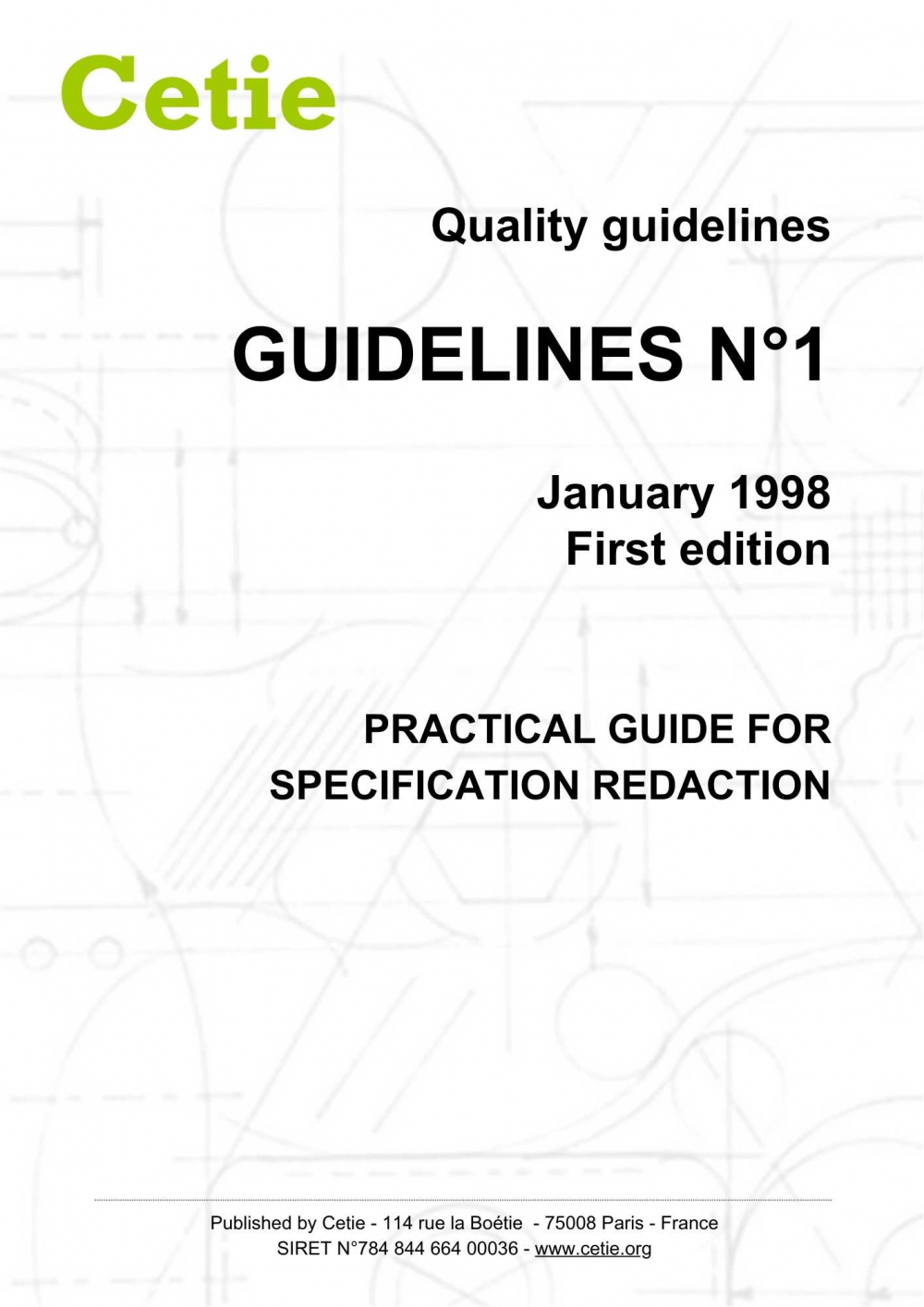Guidelines No. 1
First edition
Published on: 01/01/1988
Practical guide for specification redaction
Scope of application
This document aims to indicate how to write a specification for bottling components.
Its scope concerns all packaging components of packaged articles (or pre-packed), whatever is the nature of the components: wood, craft, plastic, metal,...etc.
Its scope concerns all packaging components of packaged articles (or pre-packed), whatever is the nature of the components: wood, craft, plastic, metal,...etc.
Table of contents
1. Purpose and Scope of Application
2. References
3. Terminology
3.1. Packaging
3.2. Specification document
3.3. Functional requirements
3.4. Structural requirements
3.5. Performance levels
3.6. Technical specifications
3.7. Quality
2. References
3. Terminology
3.1. Packaging
3.2. Specification document
3.3. Functional requirements
3.4. Structural requirements
3.5. Performance levels
3.6. Technical specifications
3.7. Quality
3.8. Quality assurance
4. Context
4.1. Packaging project study
4.2. Technical definition of the packaging
4.3. Summary
4.4. Packaging project study
4.5. Technical definition of the packaging
5. Packaging Supply Specifications
5.1. Structure of a specification document
5.2. Functional requirements of the item
5.3. Structural requirements
5.4. Technical specifications
5.5. Operating principles of the specification document
6. Analysis of Packaging Functional Requirements
6.1. Objective
6.2. Analysis Framework
6.2.1. Grouping individual items
6.2.2. Protecting individual items
6.2.3. Suitability for processing
6.2.4. Suitability for storage
6.2.5. Suitability for accessibility, handling, and transportation
6.2.6. Providing information
6.2.7. Meeting marketing requirements
6.2.8. Other functional requirements
6.3. Hierarchy and performance levels
4. Context
4.1. Packaging project study
4.2. Technical definition of the packaging
4.3. Summary
4.4. Packaging project study
4.5. Technical definition of the packaging
5. Packaging Supply Specifications
5.1. Structure of a specification document
5.2. Functional requirements of the item
5.3. Structural requirements
5.4. Technical specifications
5.5. Operating principles of the specification document
6. Analysis of Packaging Functional Requirements
6.1. Objective
6.2. Analysis Framework
6.2.1. Grouping individual items
6.2.2. Protecting individual items
6.2.3. Suitability for processing
6.2.4. Suitability for storage
6.2.5. Suitability for accessibility, handling, and transportation
6.2.6. Providing information
6.2.7. Meeting marketing requirements
6.2.8. Other functional requirements
6.3. Hierarchy and performance levels
History
First edition: 10/1988
First edition: 10/1988
Contributors
BSN EMBALLAGE, CARTONNERIE DE KAYSERBERG, CERMEX, FRANÇAISE DE BRASSERIE, MEPAL, MOET & CHANDON, S.E.M., S.G.E.M. VITTEL, SAVOYE-N S.A., SOCAR.
Document under responsibility of working group:
Bottlers/fillers and glass manufacturers
WG chair: To be elected - -
This joint group aims to coordinate the production of documentation at the junction of the glass container production and bottling/filling. It includes good practices, the use and storage of glass containers, and quality management on bottling lines. This joint group also provides an opportunity for bottlers/fillers to open discussions on specific work items of the permanent glass groups
